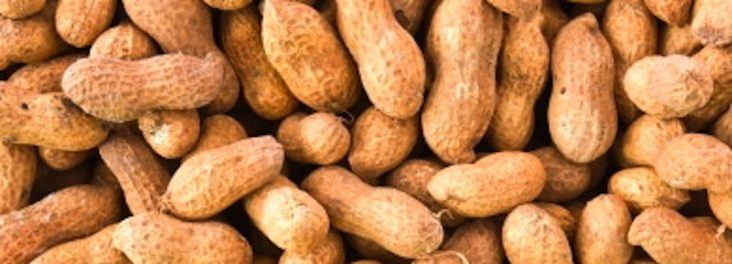Record number of peanuts could be harvested in Arkansas this year
by March 20, 2024 12:48 pm 897 views

About 14 years ago, farmers in the Arkansas Delta began planting peanuts. Producers had grown the legume in years past, but it had been decades since the crop had been produced on a mass scale in Northeast Arkansas.
A record number of peanuts could be grown in the Natural State in 2024, according to projections.
In 2023, Arkansas peanut growers set a state record for average yield with 5,800 pounds per acre, across more than 35,000 acres. With another 5,000 acres or so, the state would’ve likely seen a new record for overall peanut production as well.
Northeast Arkansas is about as far north as most peanuts can be grown. The crop requires at least five months of warm weather and it needs sandy soil similar to cotton. Georgia, Texas, and Oklahoma are among the top peanut producing states.
Travis Faske, extension plant pathologist for the University of Arkansas System Division of Agriculture, said he could easily exceed 40,000 acres of peanuts in 2024, setting the stage for record production.
“That’s about as much sandy soil as we have in Arkansas that isn’t already planting cotton,” Faske said. Faske, who has served as the Division of Agriculture’s acting peanut agronomist for most of the past decade, was part of an expert panel addressing growers in Jonesboro earlier this month for the Northeast Delta Peanut Production Meeting. About 50 growers and consultants from the area attended.
“If we get to 50,000 acres at some point, it will be because peanut prices are extraordinarily high,” Faske said.
Mike Hamilton, extension irrigation instructor for the Division of Agriculture, told attendees that researchers are zeroing in on the most efficient way to irrigate Arkansas peanuts.
“Historically, the biggest peanut states have center-pivot irrigation,” Hamilton said. “In Arkansas, we’re 90% furrow irrigated. Sometimes we have issues with wetting that soil bed, and getting it soaked through, which is something you don’t have to worry about with center pivots.”
As with most crops, proper irrigation is a tightrope, strung between the needs of the plant and the whims of Mother Nature, including rainfall patterns and pathogens such as Southern blight.
In 2023, Southern blight – a fungal disease Arkansas peanut growers must deal with to some degree every year – made a surprise appearance in early August, about three weeks earlier than in previous years, due to high amounts of rainfall in the area.
“It just came unseasonably early,” Faske said.
Tom Barber, extension weed specialist for the Division of Agriculture, said Palmer amaranth, commonly known as pigweed, was the most pressing weed problem for peanut growers.
“In the area of the state where we grow the most peanuts, our pigweed populations are resistant to at least five herbicide modes of action,” Barber said. “That pretty much takes our peanut herbicides out of the game.”
Barber, who was named interim associate vice president of agriculture and natural resources for the Division of Agriculture in February, said the key to successfully controlling pigweed and other weeds in peanuts was the timely, overlapping application of residual herbicides.
“The biggest thing with peanuts is that when they come out of the ground, it’s a slow start,” Barber said. “It takes them a while to get going and to the canopy. So there’s a long period of time when we can possibly have pigweed clusters. So, we use residual herbicides to prevent those clusters from coming up.”
Barber said the long-term key to controlling pigweed, whether in peanuts or any other crop in the region, will come down to cultural practices such as crop rotation and the use of cover crops between one year’s harvest and the next planting.
“From a weed-control standpoint, talking about crop, yield and profitability — most crops are the same: We have a weed-free period at the beginning of the year,” Barber said. “That’s the critical period for weed control in all our crops.”
